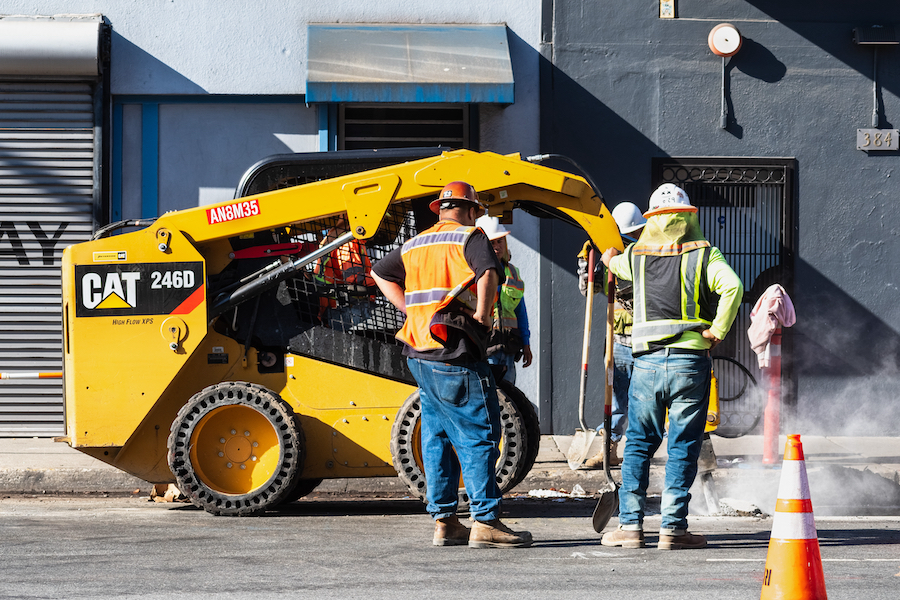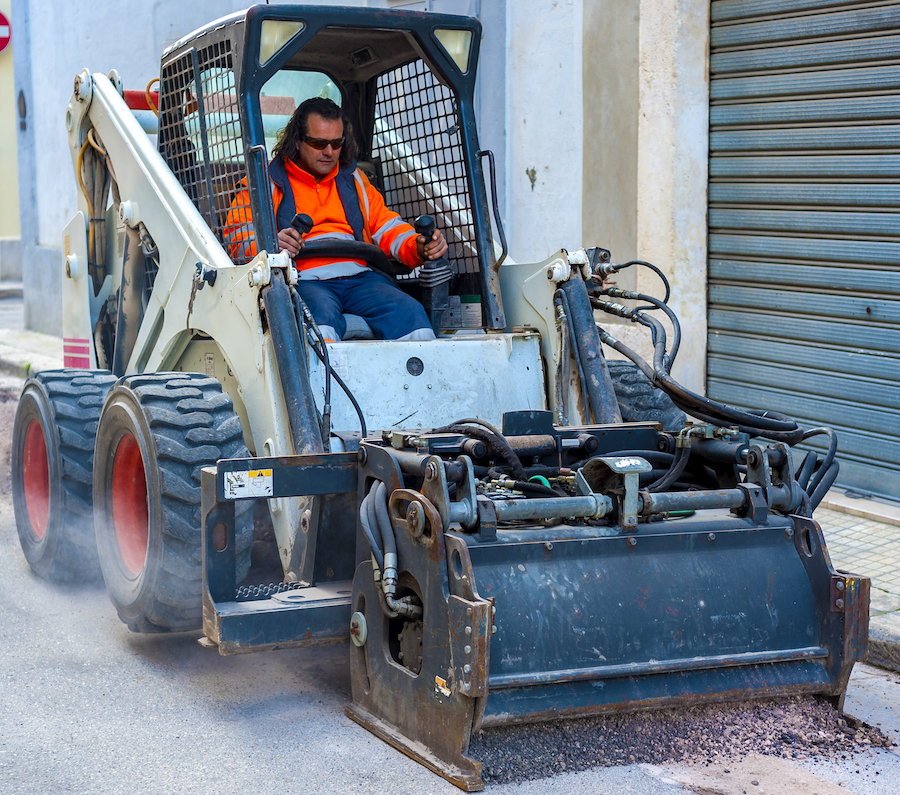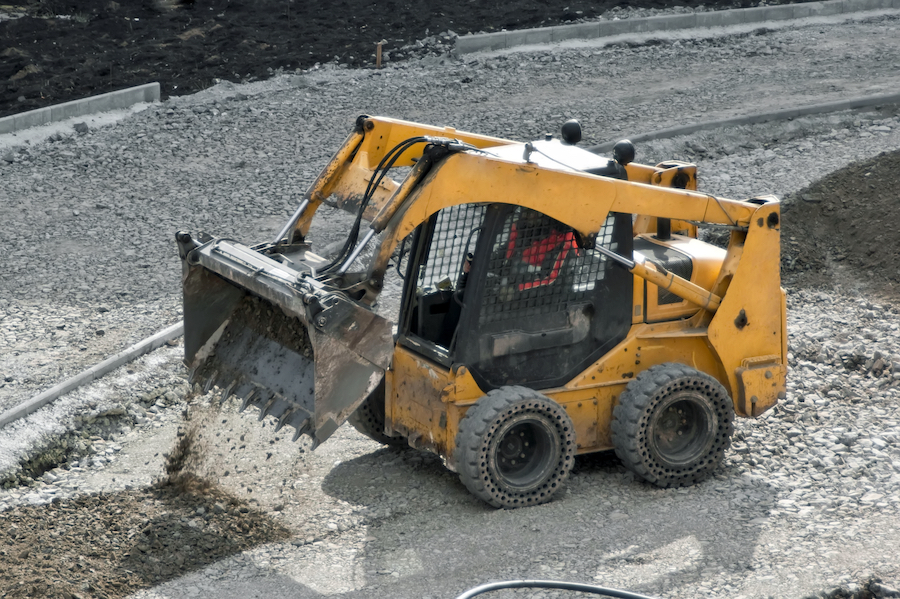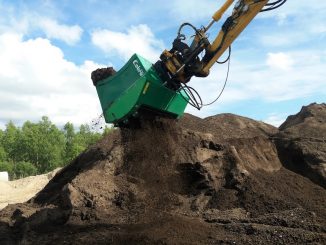View the complete article here.
A skid steer is one of the most versatile pieces of construction equipment out there. It’s compact, can turn on a dime, and accommodates a wide variety of attachments.
And although operating a skid steer isn’t rocket science, understanding the fundamentals will—not only help greenhorns get started—but will help veterans master the timeless craft of skid steer operation.
What is a Skid Steer?
A skid steer is a compact machine with either four wheels or two tracks. Generally, wheeled skid steers offer better fuel efficiency, maneuverability, and higher speeds. Tracked skid steers move slower but have better traction and more power. They are best for slopes and rough terrain. And because we know you’re going to ask: a Bobcat is a skid steer. It’s like calling a cotton swab a Q-tip.

Safety
Here is the safest way to operate a skid steer:
Manufacturer’s Manual
Read the manual. We’re going to give you general instructions. However, each machine – depending on age, manufacturer, and model – may have differences. You also need to check the specs to ensure the skid steer can handle the work you plan to do. So always read the instructions.
Personal Protective Equipment (PPE)
It’s hot, humid, and you’re sweating. Personal protective equipment (PPE) can be particularly uncomfortable in these conditions. We feel you. Wear your PPE anyway. Would you rather be sweaty and safe or comfortable and hard of hearing? We strongly recommend the following PPE:
- Ear protection
- Hard hat
- Reflective vest
- Work gloves
- Work boots
Pre-inspection
You want to make sure your skid steer is ready for action. Perform the following pre-inspection before you even think about entering the cab:
- Check the oil.
- Check the tires for tread wear.
- Look at the area around the skid steer and remove any obstacles. (Or at least be aware of what you need to maneuver around.)
Restraints
Skid steers have two safety restraints – the seat belt and the safety bar. Hearing the word “restraint” makes some of you refuse to use them right off the bat. Fortunately, some skid steers won’t start until you at least click the seatbelt. We’re telling you now it’s not a choice in terms of your personal safety. The seatbelt and safety bar work together to provide the ultimate safety experience. Yeah, we said it.
Entering the Cab
Walk in, turn around, sit down. Adjust the seat to your comfort level. Put on your seatbelt and lower the safety bar. We’re assuming you’ve already put on ear protection and are wearing your hard hat, reflective vest, work gloves, and work boots. Right?

Controls
Read the manual to get familiar with the controls for your skid steer. If there’s a diagram of the controls, make a copy and tape it up in the cab where you can see it.
Starting
This may seem obvious, but some of you crazy kids do crazy things: never start the skid steer from outside the cab. Some newer skid steer models require your butt to be in the seat before it will start.
- Key: Turn the key a quarter turn until you hear a click. Then turn again until the engine engages.
- Button: Some skid steers do not have a key ignition. What the buttons are called may be different, but whether it’s a key or keyless start, it’s a typically a two-step operation. For example, some models may have a power button, then a start button.
- Check gauges. Anything in the red? If so, determine and fix the problem before you start moving.
- Turn off the parking break. This is usually an off/on switch often located above or in front of you.
- Look around you before you start moving.
Steering
There are a few different types of controls for steering and maneuvering the boom and bucket. H pattern, ISO (Isolation), and some configurations use foot pedals for some functions.
H pattern
You’ll see a joystick on each side of the seat. Both of those joysticks control movement as follows:
- To move left, push the left joystick forward.
- To move right, push the right joystick forward.
- To move straight forward, push both joysticks forward at the same time.
- To move straight back, pull both joysticks back at the same time.
ISO (Isolation)
With ISO controls, the joystick on one side handles moving and steering as follows:
- To move left, push the joystick forward and to the left.
- To move right, push the joystick forward and to the right.
- To move straight forward, push the joystick forward.
- To move straight back, pull the joystick back.
Boom and Bucket
H pattern
The H pattern uses foot pedals to control the boom and bucket. You’ll use the heel of your foot for some functions and your toes for other functions. Typically the left pedal controls the boom, and the right pedal controls the bucket. You control the boom and bucket as follows:
- Lower the boom by pushing your left toe down on the pedal.
- Raise the boom by pressing your left heel down on the pedal.
- Dump the bucket by pushing your right toe down on the pedal.
- Curl the bucket for digging by pressing your right heel down on the pedal.
ISO (Isolation)
The joystick that is not used for moving and steering is used for controlling the boom and bucket.
- Lower the boom by pulling the joystick back.
- Raise the boom by pushing the joystick forward.
- Curl the bucket for digging by moving the joystick to the left.
- Dump the bucket by moving the joystick to the right.

Skid Steer Monitoring
Most skid steers have the following basic gauges:
- The temperature gauge tells you how much heat the engine is generating.
- The fuel gauge lets you know how much fuel you have left.
- The hour gauge lets you know how long you’ve been running the skid steer.
The hydraulic power gauges include:
- Variable Flow to vary pressure flow while using an attachment.
- High Flow is a hydraulic power option needed for some types of attachments.
- Max Flow is used for maximum hydraulic power for heavy duty attachments.
- Auxiliary Pressure Release is used to release pressure from attachments with hydraulic hoses.
Attachments
An amazing array of attachments are available for your skid steer. Just be sure that the attachment you want to use is appropriate in type and size for your skid steer. Some examples of skid steer attachments include:
- Augers
- Backhoes
- Brooms
- Brush cutters
- Buckets and bucket teeth
- Cold planers
- Forks
- Hammers
- Mulchers
- Rakes
- Snow pushers
- Tillers
- Trenchers
One piece equipment can handle jobs in landscaping, construction, farming, demolition, and more. The manufacturer and your friendly equipment dealer can help you select the right tool for the job that will fit your skid steer.
Safety Tips
To hold onto all your limbs – and your life – follow these 10 safety tips:
- Always wear proper PPE. Hard hat, reflective vest, work gloves and boots, safety glasses.
- Read the owner’s manual for the skid steer you are using.
- Do a pre-inspection of the skid steer each time you plan to use it.
- Always wear your seatbelt and lower the safety bar before turning on the skid steer.
- Don’t start the skid steer from outside the machine.
- Don’t allow others to sit in the bucket or anywhere else on the skid steer while in use.
- Be aware of your surroundings before moving the skid steer. (No people or obstructions.)
- Use cones, barricades, fencing, or other means to clearly identify the work area.
- Only people who are working in the area need to be there. Anyone else should be sent out to go get lunch or coffee. (Or donuts.)
- Never exceed the manufacturer’s load and speed limits.
FAQ
Who invented the skid steer?
The Keller brothers of Minnesota invented the skid steer in 1957 to clean turkey manure out of a barn for a turkey producer. Seriously, that’s the story.
Which company sells the most skid steers?
Bobcat is still the biggest cat on the block with 40% of the global skid steer market.
How do I get a job as a skid steer operator?
Practice, man, practice. But first you’ll want to take a certificate course. There are many companies that offer online training, but a combination of online and in-person may be the best choice. Ultimately, you’ll need to hire on with a company that offers on-the-job training.
Conclusion
If you’re going to learn how to use just one piece of construction equipment, go for a skid steer. It’s versatility makes it an ideal choice for many different types of jobs – from farming to construction. It’s relatively easy to operate, but we do recommend practicing a few times before you use it in the real world. Do a pre-inspection, don your PPE, and follow the manufacturer’s instructions for safety and use. Before you know it, you’ll be an expert skid steer operator.
View the complete article here.
What safety precautions should I take when operating a skid steer?
Always wear proper PPE, conduct a pre-inspection of the skid steer, wear your seatbelt, and be aware of your surroundings; follow manufacturer's load and speed limits.
Who invented the skid steer, and which company sells the most skid steers?
The Keller brothers of Minnesota invented the skid steer in 1957; Bobcat holds the largest share, with 40% of the global skid steer market.












































